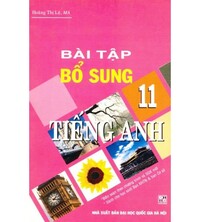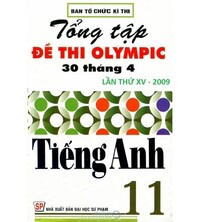Writing - Unit 3. Cities of the future - SBT Tiếng Anh 11 Global Success
1. Use the words and phrases below, and add some words where necessary to make meaningful sentences. Change the verb forms if necessary. 2. Complete the sentences using the linking verbs in brackets and the adjectives in the box. You can add more words if necessary. 3. Write an article (120-150 words) about the advantages and disadvantages of roof gardens in the city. Use the ideas below to help you.
Bài 1
1. Use the words and phrases below, and add some words where necessary to make meaningful sentences. Change the verb forms if necessary.
(Sử dụng các từ và cụm từ dưới đây, thêm một số từ cần thiết để tạo thành câu có nghĩa. Thay đổi các hình thức động từ nếu cần thiết.)
1. Build / smart city / seem / impossible / 50 years / ago.
2. I / not think / live / smart city / good / everyone.
3. art museum building / look / impressive / a distance.
4. great thing about / live / smart city / be / very / safe.
5. Since / the first driverless railway / open / Japan / 1981, driverless trains / become popular / world.
6. city tour, / including / visit / new twin towers, / sound / interest.
7. City dwellers / can easily / book / parking lot / use / a mobile app.
8. My parents / think / buy / new / house / outside / city.
Lời giải chi tiết:
1. Building a smart city seemed impossible 50 years ago.
(Xây dựng thành phố thông minh dường như là bất khả thi cách đây 50 năm.)
2. I don't think living in a smart city is good for everyone.
(Tôi không nghĩ rằng sống trong một thành phố thông minh là tốt cho tất cả mọi người.)
3. The art museum building looks impressive from a distance.
(Tòa nhà bảo tàng nghệ thuật nhìn từ xa rất ấn tượng.)
4. The great thing about living in a smart city is that it is very safe.
(Điều tuyệt vời khi sống trong một thành phố thông minh là nó rất an toàn.)
5. Since the first driverless railway opened in Japan in 1981, driverless trains have become popular all over the world.
(Kể từ khi tuyến đường sắt không người lái đầu tiên được mở tại Nhật Bản vào năm 1981, các chuyến tàu không người lái đã trở nên phổ biến trên toàn thế giới.)
6. The city tour, including the visit to the new twin towers, sounds interesting.
(Chuyến tham quan thành phố, bao gồm cả chuyến thăm tòa tháp đôi mới, nghe có vẻ thú vị.)
7. City dwellers can easily book a parking lot by using a mobile app.
(Người dân thành phố có thể dễ dàng đặt chỗ đậu xe bằng ứng dụng di động.)
8. My parents are thinking of buying a new house outside the city.
(Bố mẹ tôi đang nghĩ đến việc mua một ngôi nhà mới ở ngoài thành phố.)
Bài 2
2. Complete the sentences using the linking verbs in brackets and the adjectives in the box. You can add more words if necessary.
(Hoàn thành các câu sử dụng các động từ liên kết trong ngoặc và các tính từ trong hộp. Bạn có thể thêm nhiều từ hơn nếu cần thiết.)

1. This is one of the best restaurants in town. All the food there (taste) _______.
2. The local authority has decided to build a bigger community centre. The idea (seem) _______.
3. My parents didn’t expect me to win the first prize. I did win, but they didn’t (appear) _______.
4. Local people often complain about the new waste collection point in the area. It (smell) _______.
5. Some people don’t earn much money. The cost of living (seem) _______.
6. Mrs Hoa is involved in many activities in the neighborhood. She (be) _______.
7. Most city dwellers travel on crowded buses and trains during rush hour. They often (become) _______.
8. In this city, private cars are banned from the city centre during rush hour. This (seem) _______.
Lời giải chi tiết:

1. This is one of the best restaurants in town.All the food there tastes (very) delicious.
(Đây là một trong những nhà hàng tốt nhất trong thị trấn. Tất cả thức ăn ở đó đều có vị (rất) ngon.)
2. The local authority has decided to build a bigger community centre. The idea seems exciting.
(Chính quyền địa phương đã quyết định xây dựng một trung tâm cộng đồng lớn hơn. Ý tưởng có vẻ thú vị.)
3. My parents didn’t expect me to win the first prize. I did win, but they didn't appear (at all) surprised.
(Bố mẹ tôi không mong đợi tôi giành được giải nhất. Tôi đã thắng, nhưng họ không có vẻ gì ngạc nhiên cả.)
4. Local people often complain about the new waste collection point in the area. It smells (very) bad.
(Người dân địa phương thường phàn nàn về điểm tập kết rác thải mới trong khu vực. Nó có mùi (rất) tệ.)
5. Some people don’t earn much money. The cost of living seems (very) high (for them).
(Một số người không kiếm được nhiều tiền. Chi phí sinh hoạt dường như (rất) cao (đối với họ).)
6. Mrs Hoa is involved in many activities in the neighborhood. She is (very) active.
(Bà Hoa tham gia nhiều hoạt động trong khu phố. Bà ấy (rất) năng động.)
7. Most city dwellers travel on crowded buses and trains during rush hour. They often become upset about the delays/traffic jams and crowded trains.
(Hầu hết cư dân thành phố di chuyển trên những chiếc xe buýt và xe lửa đông đúc vào giờ cao điểm. Họ thường khó chịu về sự chậm trễ/tắc đường và những chuyến tàu đông đúc.)
8. In this city, private cars are banned from the city centre during rush hour. This seems effective in preventing traffic jams.
(Tại thành phố này, ô tô cá nhân bị cấm vào trung tâm thành phố trong giờ cao điểm. Điều này có vẻ hiệu quả trong việc ngăn chặn ùn tắc giao thông.)
Bài 3
3. Write an article (120-150 words) about the advantages and disadvantages of roof gardens in the city. Use the ideas below to help you.
(Viết một bài viết (120-150 từ) về những thuận lợi và khó khăn của khu vườn trên mái nhà trong thành phố. Sử dụng những ý tưởng dưới đây để giúp bạn.)

Lời giải chi tiết:
These days, roof gardens have become more and more popular in urban areas. In my opinion, this trend could bring both advantages and disadvantages.
On the one hand, roof gardens play important roles in improving air quality in cities by reducing the amount of carbon dioxide and releasing oxygen back into the air. Furthermore, they can bring a habitat for wildlife. For example, they provide water, food, and cover for birds, bees and insects. They also help city dwellers interact and connect with nature by offering an environment for relaxation and physical activities.
On the other hand, roof gardens are expensive. Investment and maintenance costs, including structural modifications, irrigation and planting systems are enormous, and the materials are not easily found, it is hard for people to afford them. Moreover, the additional weight of the garden can cause problems for the building, especially in storms or other adverse weather conditions.
In conclusion, there are both pros and cons of roof gardens. While roof gardens bring numerous benefits, the costs and risks associated with them need to be carefully considered.
(Ngày nay, vườn trên mái ngày càng trở nên phổ biến ở các đô thị. Theo tôi, xu hướng này có thể mang lại cả ưu điểm và nhược điểm.
Một mặt, vườn trên mái đóng vai trò quan trọng trong việc cải thiện chất lượng không khí ở các thành phố bằng cách giảm lượng khí carbon dioxide và giải phóng oxy trở lại không khí. Hơn nữa, chúng có thể mang lại môi trường sống cho động vật hoang dã. Ví dụ, chúng cung cấp nước, thức ăn và chỗ trú ẩn cho chim, ong và côn trùng. Chúng cũng giúp cư dân thành phố tương tác và kết nối với thiên nhiên bằng cách cung cấp một môi trường để thư giãn và hoạt động thể chất.
Mặt khác, những khu vườn trên mái rất tốn kém. Chi phí đầu tư và bảo trì, bao gồm sửa đổi kết cấu, hệ thống tưới tiêu và trồng trọt là rất lớn, và vật liệu không dễ tìm, người dân khó có thể mua được. Hơn nữa, trọng lượng tăng thêm của khu vườn có thể gây ra các vấn đề cho tòa nhà, đặc biệt là khi có bão hoặc các điều kiện thời tiết bất lợi khác.
Tóm lại, có cả ưu và nhược điểm của vườn trên mái. Trong khi vườn trên mái mang lại vô số lợi ích, chi phí và rủi ro liên quan đến chúng cần được xem xét cẩn thận.)
Search google: "từ khóa + timdapan.com" Ví dụ: "Writing - Unit 3. Cities of the future - SBT Tiếng Anh 11 Global Success timdapan.com"







